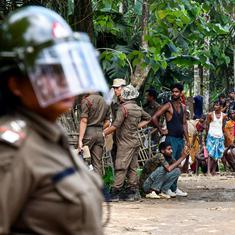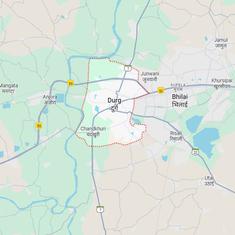Union minister Jitendra Singh’s statement in Parliament on the Ram Setu kicked off a political storm, with the Congress’ Chhattisgarh Chief Minister Bhupesh Baghel saying last Saturday that the Bharatiya Janata Party “must apologise for misleading” the nation on the issue.
Ram Setu or Adam’s Bridge is a chain of limestone shoals between Rameswaram island off India’s south-eastern coast and the Mannar island off Sri Lanka’s north-western coast. Popular Hindu belief attributes its construction to the god Ram, according to events in the epic Ramayana.
Replying to questions on whether the existence of the Ram Setu can be proven through satellite imagery, Singh had stated on Thursday that such images “cannot provide direct information about the origin and age of this structure (Ram Setu)”.
This latest back and forth adds to a long-standing political contentions between the BJP and the Congress over the nature of the Ram Setu’s existence – whether it is natural or human-made – triggered in the mid-2000s by the proposed Sethusamudram Shipping Canal Project. This canal would damage the formation which, the BJP claims, carries cultural and historical significance for many Indians.
What are the BJP and Congress arguing?
In Parliament, Earth Sciences Minister, Jitendra Singh explained there were limitations in exploring the Ram Setu through satellite imaging. Referring to the Ramayana, he said its “history dates back to about more than 18,000 years and that bridge, if you go by the history, was about 56 kilometres long”.
Singh added: “To some extent through space technology, we have been able to discover pieces and islands, some kind of limestone shoals, which of course can’t be accurately said to be remnants of parts of a bridge. But they have certain amount of continuity in location through which some surmises can be drawn.”
In response, Baghel attacked the BJP government saying, “When the same thing [was] said during Congress rule, BJP called us anti-Ram. Now this Ram bhakt says in Parliament that they do not have strong proof (of Ram Setu).”
Citing a news report, former Madhya Pradesh chief minister and Congress leader Kamal Nath also said the Modi government had admitted that “no solid evidence has been found for the [Ram Setu’s] existence”.
He further accused the BJP of hurting religious sentiments: “This statement by the BJP government is an attack on the faith of crores of people of Hindu society. Lord Ram is the centre of the faith of the people.”
The BJP hit back at the Congress. The party’s Member of Parliament Rajyavardhan Singh Rathore and Manoj Tiwari said the Congress was “twisting” the government’s statements – suggesting that the minister had not drawn any such conclusion.

How did Ram Setu first emerge as a political debate?
This political debate on the Ram Setu is not new. The topic first became contentious when the Congress-led United Progressive Alliance government pushed forward the Sethusamudram project in 2005. The plan was first conceived of by the British in the 19th century and underwent several iterations with regards to the alignment, including one by the BJP-led National Democratic Alliance government in 1999.
The project would require dredging the seabed to create an 83-km-long deep-water shipping canal connecting the Palk Bay and the Gulf of Mannar situated between India and Sri Lanka. The water in the area is shallow, hindering navigation by large ships. The proposed canal would provide ships a continuously navigable marine route around the Indian peninsula as an alternative to having to go around Sri Lanka. This, the project’s proponents suggest, would cut travel time and boost economic growth.
What makes the matter contentious is that the canal’s alignment, as approved by the Congress government, cut across the Ram Setu.
This led the BJP and various Hindu organisations to oppose the project as the dredging would damage the the bridge.
Hindutva opposition
The BJP and other right-wing organisations have cited Hindu beliefs about the Rama Setu to oppose the project. They cite the Ramayana, the ancient epic, as mentioning that the Ram Setu was built by Lord Rama and his “vanar sena” or army of monkeys. This bridge, according to the epic, was used by them to cross over into Lanka to rescue his wife Sita. Because of this, the BJP and other organisations say that the Ram Setu must not be damaged.

On the other hand, in 2007 during the United Progressive Alliance government, the Archaeological Survey of India, which reports to the Culture Ministry, had filed an affidavit before the Supreme Court stating that Ram was a mythical character and that the Ramayana had no historical basis. Therefore, the government agency said there was no historical or scientific evidence to establish the Ram Setu is a human-made bridge. However, the affidavit was later withdrawn by the Congress government following protests by the BJP.
In 2018, the BJP-led Union government submitted before the Supreme Court that it will not touch the Ram Setu and would find an alternate alignment for the canal. But the project remains stayed as the matter is pending before the Supreme Court.
Some politicians, such as BJP leader and former Union minister Subramanian Swamy, have sought a national heritage monument status for the Ram Setu to ensure it is not compromised, even as the project remains in cold storage.










